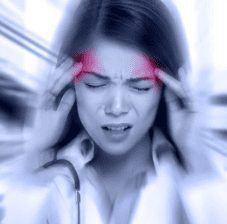Benign Paroxysmal Positional Vertigo (BPPV) and Vertigo
What is Benign Paroxysmal Positional Vertigo (BPPV)?
First of all let’s break down the name:
– Benign meaning that it is not life-threatening.
– Paroxysmal refers to the symptoms coming and going.
– Positional symptoms are brought about in specific positions.
– Vertigo refers to the feeling of the room spinning.
BPPV is a mechanical issue of the inner ear. BPPV is caused by the crystals being dislodged
Into the semicircular canal. This results in incorrect signals being sent to the brain and results in vertigo. This can occur idiopathically (randomly) or can occur following a trauma to the head such as a car crash.
What are the symptoms of Benign Paroxysmal Positional Vertigo?
– Dizziness – seconds after a head movement and not lasting for longer than a minute
– Lightheadedness
– Balance Problems
– Nausea
Management of Benign Paroxysmal Positional Vertigo?
The Physiotherapist will first identify which canal is affected by the crystals. Once identified the Physiotherapist will perform a technique that aims to move the crystals back to their correct position and results in less ‘dodgy’ firing of the vestibulocochlear nerve. This technique can sometimes take anywhere between 1-5 regular attempts.
After identifying which canals are affected your therapist will prescribe a technique (Epley’s Manoeuvre) that dislodges the crystals and allows a normal vestibular function. This will result in less ‘dodgy firing’ of the vestibulocochlear nerve and reduce the symptoms.

